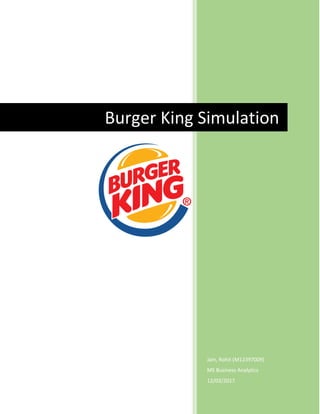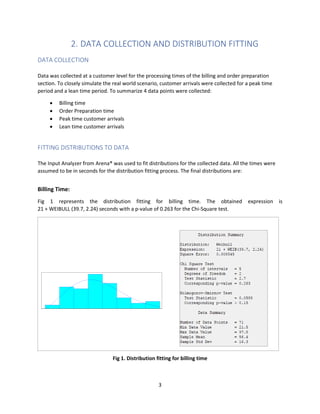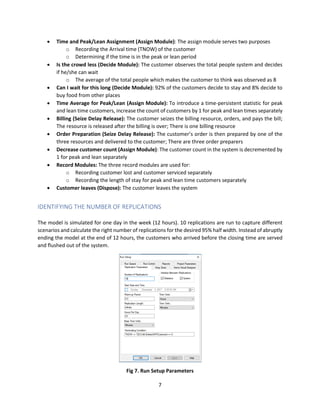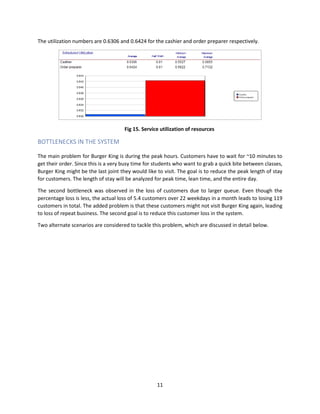The project analyzes the operations of a Burger King outlet at Tangeman University Center to identify and improve process bottlenecks during peak hours. Utilizing simulation software Arena®, data on customer arrivals and service times was collected, revealing significant wait times that lead to customer loss. Two scenarios for resource management were proposed to reduce congestion: adding a peak hour order preparer and restructuring existing resources, with the latter proving more effective in minimizing customer wait times.


















![18
6. REFERENCES
[1] Simulation With Arena, 6th
Edition – W. David Kelton, Randall P. Sadowski, & Nancy B. Zupick –
McGraw – Hill International Edition
[2] Burger King Logo - https://commons.wikimedia.org/wiki/File:Burger_King_Logo.svg](https://image.slidesharecdn.com/jainrohitindividualproject-180107015245/85/Burger-King-Simulation-19-320.jpg)